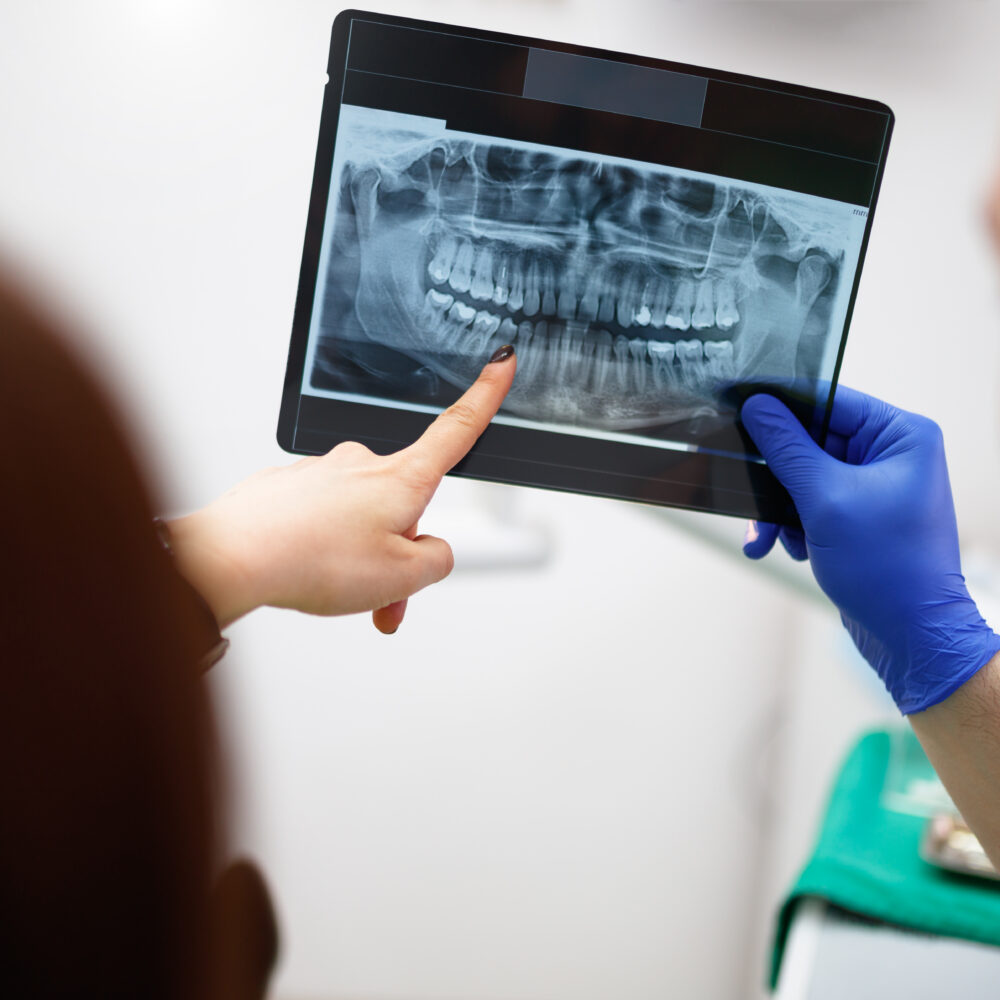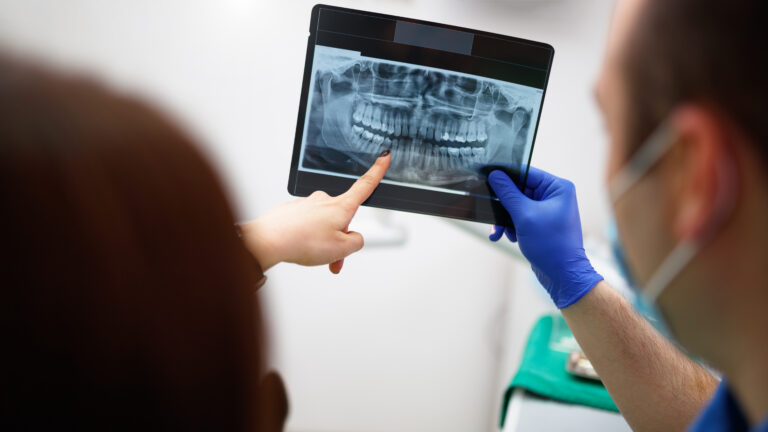Routine dental X-rays are not backed by evidence—experts want it to stop
The actual recommendations might surprise you—along with the state of modern dentistry.

An expert looking at a dental X-ray and saying “look at that unnecessary X-ray,” probably. Credit: Getty | MilanEXPO
Has your dentist ever told you that it’s recommended to get routine dental X-rays every year? My (former) dentist’s office did this year—in writing, even. And they claimed that the recommendation came from the American Dental Association.
It’s a common refrain from dentists, but it’s false. The American Dental Association does not recommend annual routine X-rays. And this is not new; it’s been that way for well over a decade.
The association’s guidelines from 2012 recommended that adults who don’t have an increased risk of dental caries (myself included) need only bitewing X-rays of the back teeth every two to three years. Even people with a higher risk of caries can go as long as 18 months between bitewings. The guidelines also note that X-rays should not be preemptively used to look for problems: “Radiographic screening for the purpose of detecting disease before clinical examination should not be performed,” the guidelines read. In other words, dentists are supposed to examine your teeth before they take any X-rays.
But, of course, the 2012 guidelines are outdated—the latest ones go further. In updated guidance published in April, the ADA doesn’t recommend any specific time window for X-rays at all. Rather, it emphasizes that patient exposure to X-rays should be minimized, and any X-rays should be clinically justified.
There’s a good chance you’re surprised. Dentistry’s overuse of X-rays is a problem dentists do not appear eager to discuss—and would likely prefer to skirt. My former dentist declined to comment for this article, for example. And other dentists have been doing that for years. Nevertheless, the problem is well-established. A New York Times article from 2016, titled “You Probably Don’t Need Dental X-Rays Every Year,” quoted a dental expert noting the exact problem:
“Many patients of all ages receive bitewing X-rays far more frequently than necessary or recommended. And adults in good dental health can go a decade between full-mouth X-rays.”
Data is lacking
The problem has bubbled up again in a series of commentary pieces published in JAMA Internal Medicine today. The pieces were all sparked by a viewpoint that Ars reported on in May, in which three dental and health experts highlighted that many routine aspects of dentistry, including biannual cleanings, are not evidence-based and that the industry is rife with overdiagnosis and overtreatment. That viewpoint, titled “Too Much Dentistry,” also appeared in JAMA Internal Medicine.
The new pieces take a more specific aim at dental radiography. But, as in the May viewpoint, experts also blasted dentistry more generally for being out of step with modern medicine in its lack of data to support its practices—practices that continue amid financial incentives to overtreat and little oversight to stop it, they note.
In a piece titled “Too Much Dental Radiography,” Sheila Feit, a retired medical expert based in New York, pointed out that using X-rays for dental screenings is not backed by evidence. “Data are lacking about outcomes,” she wrote. If anything, the weak data we have makes it look ineffective. For instance, a 2021 systemic review of 77 studies that included data on a total of 15,518 tooth sites or surfaces found that using X-rays to detect early tooth decay led to a high degree of false-negative results. In other words, it led to missed cases.
Feit called for gold-standard randomized clinical trials to evaluate the risks and benefits of X-ray screenings for patients, particularly adults at low risk of caries. “Financial aspects of dental radiography also deserve further study,” Feit added. Overall, Feit called the May viewpoint “a timely call for evidence to support or refute common clinical dental practices.”
Dentistry without oversight
In a response published simultaneously in JAMA Internal Medicine, oral medicine expert Yehuda Zadik championed Feit’s point, calling it “an essential discussion about the necessity and risks of routine dental radiography, emphasizing once again the need for evidence-based dental care.”
Zadik, a professor of dental medicine at The Hebrew University of Jerusalem, noted that the overuse of radiography in dentistry is a global problem, one aided by dentistry’s unique delivery:
“Dentistry is among the few remaining health care professions where clinical examination, diagnostic testing including radiographs, diagnosis, treatment planning, and treatment are all performed in place, often by the same care practitioner” Zadik wrote. “This model of care delivery prevents external oversight of the entire process.”
While routine X-rays continue at short intervals, Zadik notes that current data “favor the reduction of patient exposure to diagnostic radiation in dentistry,” while advancements in dentistry dictate that X-rays should be used at “longer intervals and based on clinical suspicion.”
Though the digital dental X-rays often used today provide smaller doses of radiation than the film X-rays used in the past, radiation’s harms are cumulative. Zadik emphasizes that with the primary tenet of medicine being “First, do no harm,” any unnecessary X-ray is an unnecessary harm. Further, other technology can sometimes be used instead of radiography, including electronic apex locators for root canal procedures.
“Just as it is now unimaginable that, in the past, shoe fittings for children were conducted using X-rays, in the future it will be equally astonishing to learn that the fit of dental crowns was assessed using radiographic imaging,” Zadik wrote.
X-rays do more harm than good in children
Feit’s commentary also prompted a reply from the three authors of the original May viewpoint: Paulo Nadanovsky, Ana Paula Pires dos Santos, and David Nunan. The three followed up on Feit’s point that data is weak on whether X-rays are useful for detecting early decay, specifically white spot lesions. The experts raise the damning point that even if dental X-rays were shown to be good at doing that, there’s still no evidence that that’s good for patients.
“[T]here is no evidence that detecting white spot lesions, with or without radiographs, benefits patients,” the researchers wrote. “Most of these lesions do not progress into dentine cavities,” and there’s no evidence that early treatments make a difference in the long run.
To bolster the point, the three note that data from children suggest that X-ray screening does more harm than good. In a randomized clinical trial published in 2021, 216 preschool children were split into two groups: one that received only a visual-tactile dental exam, while the others received both a visual-tactile exam and X-rays. The study found that adding X-rays caused more harm than benefit because the X-rays led to false positives and overdiagnosis of cavitated caries needing restorative treatment. The authors of the trial concluded that “visual inspection should be conducted alone in regular clinical practice.”
Like Zadik, the three researchers note that screenings for decay and cavities are not the only questionable use of X-rays in dental practice. Other common dental and orthodontic treatments involving radiography—practices often used in children and teens—might also be unnecessary harms. They raise the argument against the preventive removal of wisdom teeth, which is also not backed by evidence.
Like Feit, the three researchers reiterate the call for well-designed trials to back up or refute common dental practices.
Beth is Ars Technica’s Senior Health Reporter. Beth has a Ph.D. in microbiology from the University of North Carolina at Chapel Hill and attended the Science Communication program at the University of California, Santa Cruz. She specializes in covering infectious diseases, public health, and microbes.
Routine dental X-rays are not backed by evidence—experts want it to stop Read More »

